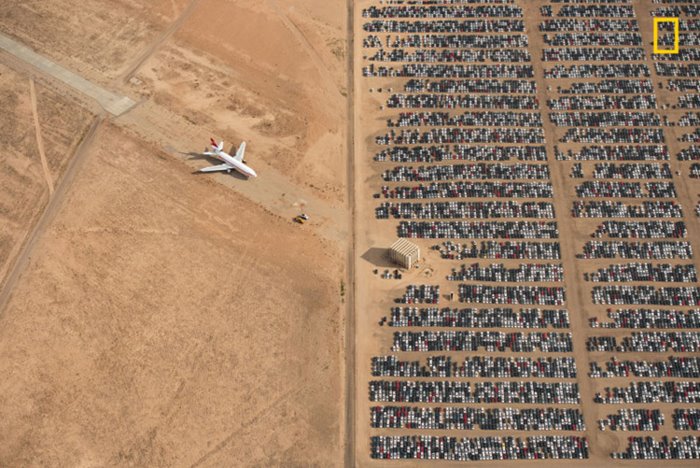The selected photos of National Geographic 2018 have been announced
The National Geographic Website Announced The Winners Of Its 2018 Photography Contest. In Each Section, Three Selected Photos And One Commendable Photo Were Presented.
Like every year, National Geographic has announced the National Geographic Photo Contest winners. The selected images by National Geographic have been chosen from more than 10 thousand images. Photographers competed in three categories: “People,” “Places,” and “Wildlife.” In the end, three photos were chosen for each section, and one decent shot was introduced.
The first rank of places
Out of 10,000 photographers, Jason Todorov deserved to receive the National Geographic Grand Prize. His ” Unreal ” photo shows the image of thousands of new cars in the desert. He will receive a prize of five thousand dollars for this work. Also, his picture will be published on National Geographic’s Instagram page.

In this photo, you can see thousands of Volkswagen and Audi cars, which are placed together in the Mojave Desert in California. These cars, whose models were built between 2009 and 2015, have been found to have been cheated in tests related to “the number of emissions from the engine” conducted by order of the US Environmental Protection Agency. Following this scandal, Volkswagen recalled millions of cars manufactured by the company due to technical defects.
I hope we will consciously take care of our beautiful planet by publishing such photos.
Jason Tedrow is a violinist, flight instructor, and aerial photographer. He started flying for the first time in 2000. “When I have a long flight, I listen to a lot of music and combine the music and the flight,” Jason told National Geographic.
Stay with Zoomit to see the other National Geographic photography contest winners.
The first rank of the people section
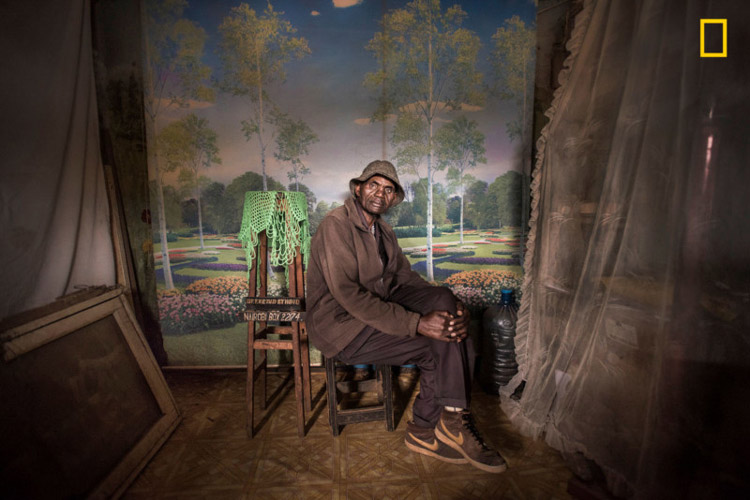
Mila Kolis is the name of the photographer who captured the above image. “When I took this photo of David Mayochukra,” Collis comments on the image’s story above. This photo is from David’s last Sunday as a photographer in his studio in a slum called Kibera in Nairobi. I wanted to take a series of portraits of the people of the area dressed in their Sunday best for church.
A friend of mine brought this photography studio to my attention just before I was about to leave. The studio atmosphere was terrific, With a curtain in the background and natural light streaming through the front door. David had worked there for 37 years, but now the studio was about to close; Because now mobile phone cameras had become very widespread. Few people today want studio portraits.
David decides to retire and return to his family in the countryside. This portrait of David has been installed on the studio’s wall so that the memory of his presence will remain forever.
The second rank of the people section
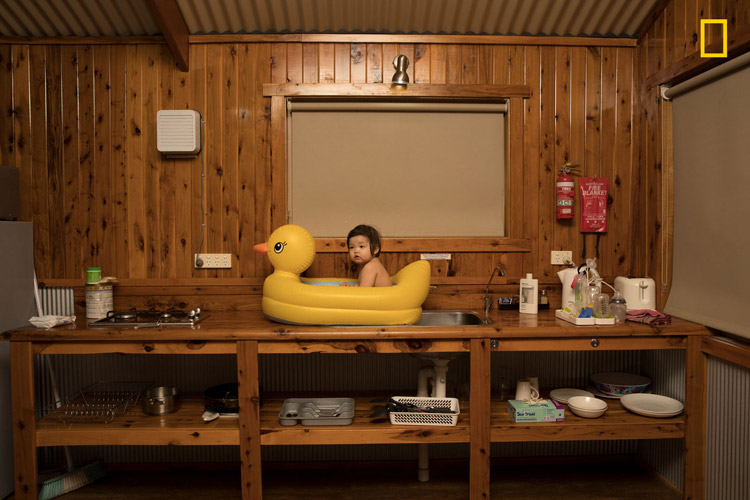
Todd Kennedy captured the image above and won second place in the People Images category. He says this:
During our family vacation, when we were going from Sydney to Alvaro, We stopped at a roadside motel. The motel was in a village called Nissan in the desert part of Australia, and a wheat field can be seen near it. The weather was hot for that time of year. So the air temperature was around 100 degrees Fahrenheit and very dusty. In this photo, our daughter Jini is sitting in her plastic duck in the dishwasher and enjoying her bath.
The third rank of the people section
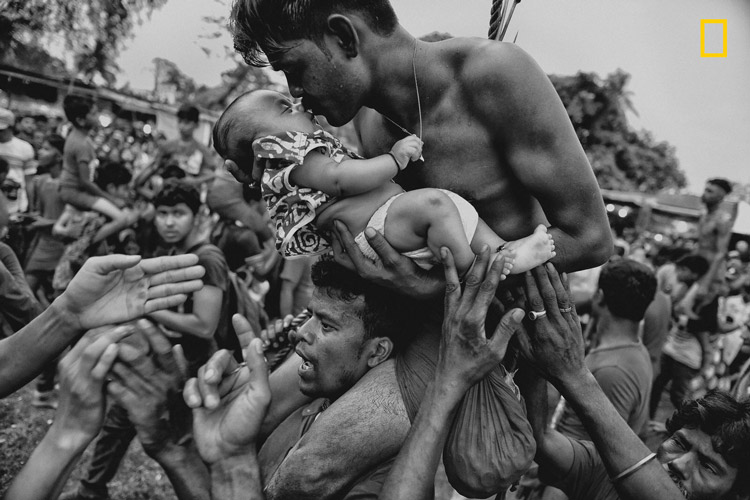
Avishek Das recorded the above image and commented on it as follows:
A Hindu devotee kisses her newborn child during the Charak Puja festival in West Bengal. In this festival, according to the customs of the Hindu religion, participants must pierce their back with a hook and hang and swing from the rope they attach to themselves.
While at this festival as a photographer, I saw many fanatical Hindus performing their religious rituals. I tried to record a moment in which a father’s love and concern for the future of his little child are both there.”
Second place in the places section
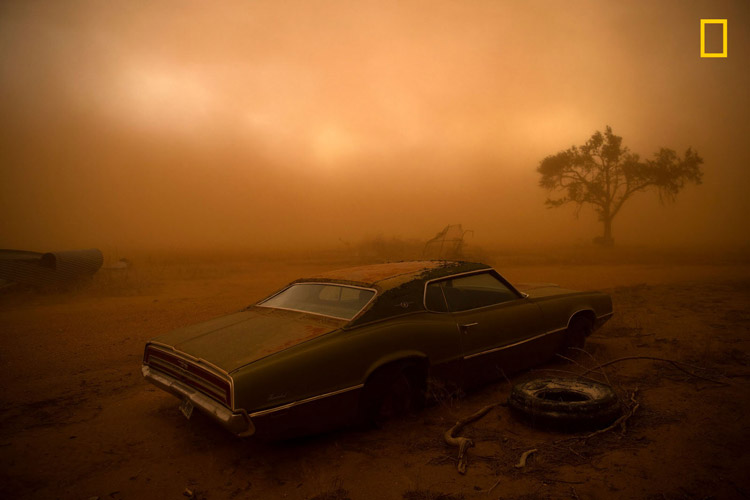
Nicholas Muir is the photographer who captured the image above. “A rusted Ford Thunderbird in Ralls, Texas, in the red dust from the storms,” he says. Storms over 90 miles per hour lift topsoil and carry it southward. The aridity of the cultivated land of the Texas Panhandle quickly provides a breeding ground for such storms.
That day, I had anticipated our location for a team of photographers and videographers to observe and record the storm. Most tornadoes occur in this region. Imagine 16 storms in 10 days! I captured this photo on the last day of our stay. It is located south of Amarillo in Texas. When a storm develops into a twisting gust, it moves downward. The resulting wind currents are so powerful that they hit the surrounding lands, lift the topsoil from the ground, and scatter it in the air.
Third place in the places section

Syria is one of the hottest news and especially photography subjects due to its involvement in the civil war. Christian Werner from Spiegel magazine managed to capture the above image. He says this: “The German magazine Spiegel gave me a mission to document the current situation of several Syrian cities. When I first set foot in the Khalidiyah area in Homs city, I was very shocked because I had never seen destruction on this scale before.
There was a terrible silence in Khalidiyah, Not a sound that indicated life in the city, not a car, nothing. Only the sound of birds and wind. As we walked down the street, I thought that the damage was so vast that it could not be covered from this angle. I could only show it from a high grade. I then asked the Syrian soldier guarding there to climb the ruins, and he allowed me to do so at my own risk.
I was standing on the roof when I took the picture. With no sign of life, this photo feels dead to me. I remember that day very well.”
Appreciable photo in the places section

Ruka Ito captured the winter image above in the Hokkaido region. In this regard, he made the following comments:
“This blue pond on the Japanese island of Hokkaido is famous as a place to attract tourists from all over the world. This pond is surrounded by beautiful trees and mountains and freezes completely in winter. This pond was built by human hands to prevent the entry and movement of materials from the activity of the Tepkachi volcano nearby.
Accumulating these materials in the pond’s water has increased the level of its minerals, including aluminum. This seductive sight can take your breath away for a few moments. I used an extended exposure technique to capture this photo to show the snowfall; simultaneously, I flashed the flash to catch the snowflakes in the foreground. “Of the photos I took of this scene; I finally chose the one that showed the best visual balance between the snowfall and the out-of-focus snowflakes.”
The first rank of the wildlife department
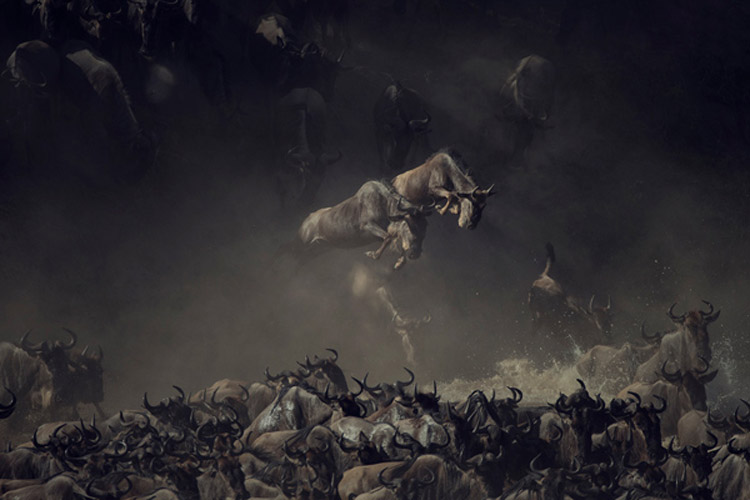
If you are interested in wildlife, the above image captured by Pim Volkers will catch your attention. He narrates the story of recording the image as follows:
This picture looks like an old painting to me. Early in the morning, just as a herd of maned wildebeest crossed the Mara River in Tanzania, the sun rose through dust and dark shadows. The presence of all these elements together made this mysterious scene.
Second place in the wildlife department
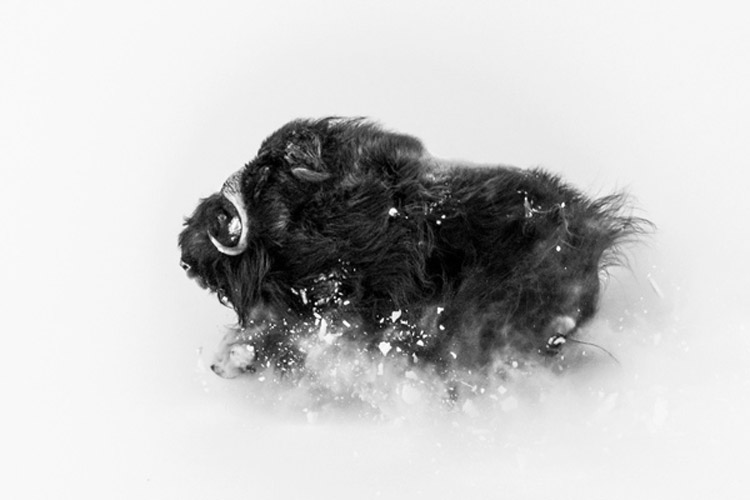
Jonas Beer, the photographer of the above image, spoke about recording this image as follows:
While hiking in the Quekata region of Greenland, I suddenly encountered a herd of wild buffalo. One was speeding up a hillside in deep snow, scattering the snow under his feet. It was a very shocking scene. I was lucky enough to be at an angle to see them easily. Watching them from this distance for an hour was an incredible experience. Wild buffalo are highly resistant to arctic conditions. They struggle with very harsh weather conditions for eight months of the year. This photo shows both their beauty and strength.”
The third place in the wildlife department
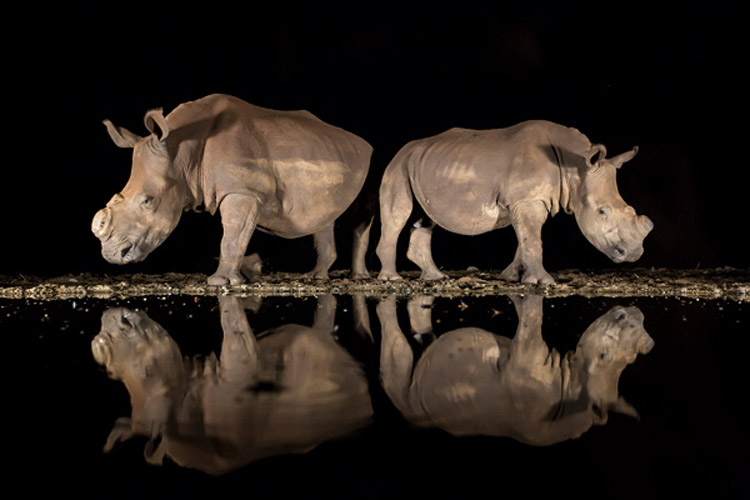
Water is always one of the best subjects for photography because it reflects the image of objects.
Alison Longivad also captured a unique image by capturing the moment when two elephants approached a pond. He says about this picture:
“This is the Zimanga Conservation Area in Africa. Just as my eyes were closing from exhaustion, two white rhinos slowly appeared in the darkness and came to drink water at the hole in front of me. They quite cleverly stood back to back to get a good look around before lowering their heads to drink.
I had a great feeling that I could photograph these endangered animals. When preparing my photography equipment, I felt tiny compared to their greatness. Although I had photographed them recently and in the last few months, these two rhinos now presented a new view in front of my eyes.
The horns of these rhinos were cut off to prevent poaching. I had heard about this method but had not seen it yet. It terrified me to think about it. Poaching has a devastating effect on their population. This method (dehorning the rhinos by the local people) must be complex. “I have a lot of respect for all the efforts made to preserve them.”










